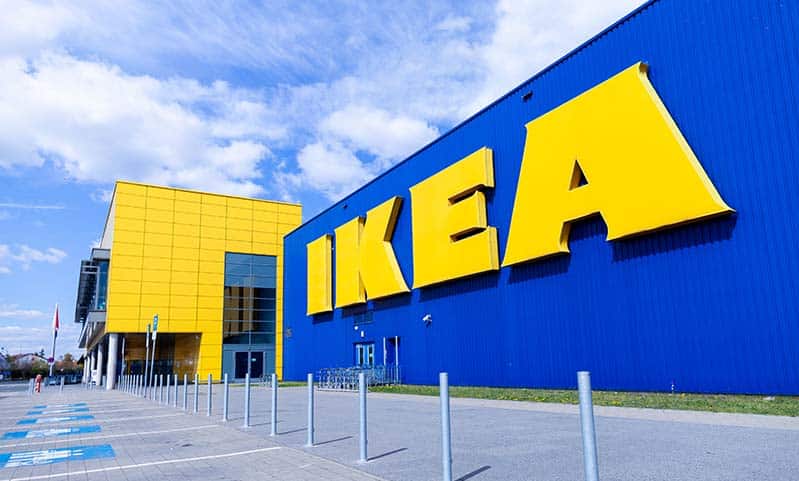The home furniture giant agreed to pay the record amount to resolve a claim that its dresser tipped over, killing a 2-year-old boy.
The settlement is almost three times greater than a similar one the company reached with three families in 2016.
Although the dresser was only thirty inches high, it fell onto Jozef Dudek and suffocated him.
Due to a large number of similar incidents dating back to the 1980s, the company recalled these dressers in 2016. The parents said they were unaware of the recall.
The Consumer Product Safety Commission reports that tip-overs kill about 28,000 Americans each year.
Half of these victims are children.
Establishing Liability in Dangerous Product Claims
In many claims, such as slip-and-falls or medical malpractice, victim/plaintiffs must establish negligence, or a lack of care.
Frequently, it is difficult to make such a showing, even though the burden of proof is only a preponderance of the evidence (more likely than not).
Dangerous product claims are different. Generally, manufacturers are strictly liable for injuries due to:
- Design defects and
- Manufacturing defects.
Some people may be familiar with the early 1970s Ford Pinto controversy.
In response to consumer demands for small, fuel-efficient vehicles, Ford set out to produce the smallest car that had rolled off the assembly line since 1907.
Ford’s chairman at the time, Lee Iacocca, supposedly insisted that the vehicle not weigh an ounce more than 2,000 pounds and not cost a dime more than $2,000.
To save weight and money, engineers placed the gas tank between the rear axle and rear bumper and did not include available self-sealing technology.
As a result, the gas tank often ruptured and exploded, even in low-speed collisions.
Ford executives debated the matter and concluded that paying wrongful death settlements was cheaper than making the Pinto safe.
This episode is a good illustration of a design defect.
The Pinto was unsafe while it was still on the drawing board. So, Ford was liable for damages as a matter of law.
Victims needed only prove causation.
Ford’s negligence was only relevant for damages purposes, as set forth below.
The seemingly endless Takata airbag saga is an example of a manufacturing defect.
As designed airbags are both safe and effective. There is no telling how many lives these devices have saved since they first appeared in the 1970s.
Operationally, airbags are delicate gadgets. The airbag must inflate in the blink of an eye but not explode.
For many years, Takata used a stable chemical propellant that fit the bill very well. In the late 1990s, the company switched to ammonium nitrate.
This volatile chemical was used in the Oklahoma City truck bomb.
Ammonium nitrate is particularly unstable in high heat and humidity environments.
Because of this change, which was a manufacturing defect, airbags exploded and people died.
Faced with huge fines and multiple lawsuits, the multinational company eventually declared bankruptcy.
Defective product victims are entitled to compensatory damages for their economic losses, such as medical bills, and noneconomic losses, such as pain and suffering.
Typically, jurors also award significant punitive damages in these cases.
Such damages punish the company and deter future misconduct.
Many companies in these situations are like Ford and Takata. They blatantly put profits before people.
In the above case, Ikea knew that the dresser was dangerous. The government had even told the company to stop selling it.
The reckless disregard of a child’s safety explains the large punitive damages award in this case.
The Foreseeable Misuse Doctrine
Since so much is at stake, company lawyers look for any loophole possible to reduce or deny compensation.
Product misuse is one such loophole.
Essentially, product misuse is an offshoot of contributory negligence, which is a very common defense in most negligence claims.
Contributory negligence, and product misuse, shift blame for the accident from the tortfeasor (negligent actor) to the victim. Yanking the drawers out of a dresser is obviously product misuse.
However, such conduct is a foreseeable misuse.
This doctrine sharply limits the contributory negligence defense in product liability cases.
The defense only applies in extreme misuse situations. Using a lawnmower to trim the ivy on a brick wall is an example of such extreme misuse. Anything less than that is arguably foreseeable.
This rule is just one of the many complexities in a defective products claim.
It’s very important that your attorney have both significant experience and significant resources.
Otherwise, it’s very difficult to obtain fair compensation in these matters.
Ascertaining Damages in a Wrongful Death Claim
If the victim survives, both economic and noneconomic damages are relatively easy to calculate.
Generally, attorneys add up the medical bills and multiply that figure by two, three, or four to determine noneconomic damages.
But what if those economic losses involve the lost future earning capacity of a small child? And what sum of money could possibly compensate for an emotional loss so devastating?
To determine a reasonable amount of lost future earnings, many New York personal injury attorneys partner with accountants and other financial professionals.
Using models which are convincing to jurors but frankly make our eyes glaze over, accountants can usually determine a fair sum.
The amount of economic losses largely determines the amount of noneconomic losses.
The actual amount largely depends on the facts of the case.
Procedurally, New York wrongful death survivors cannot obtain compensation for their own grief and suffering.
Such compensation might be available in a separate action, under a theory like negligent infliction of emotional distress. The rules are a bit different when the decedent was a child and the claimants are the child’s parents.
No amount of money can truly compensate for a wrongful death, but the compensation available in a defective products case assuages the family’s grief.
For a free consultation with an experienced personal injury attorney in New York, contact Napoli Shkolnik PLLC. We do not charge upfront legal fees in defective product or wrongful death claims.
